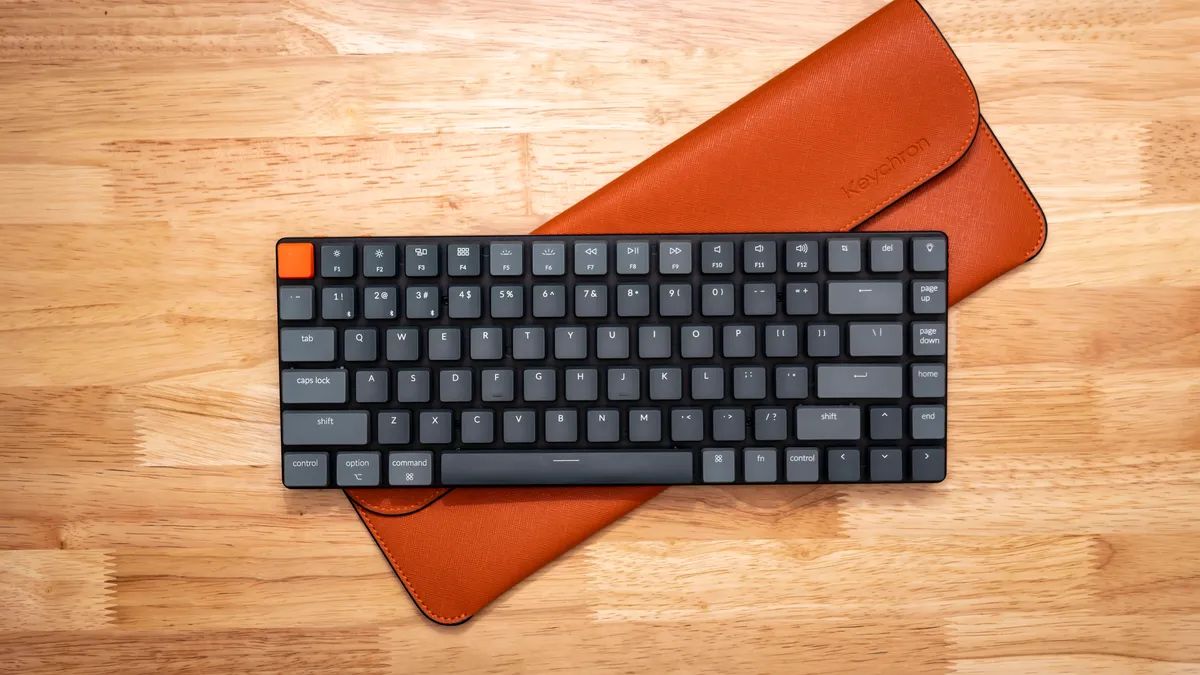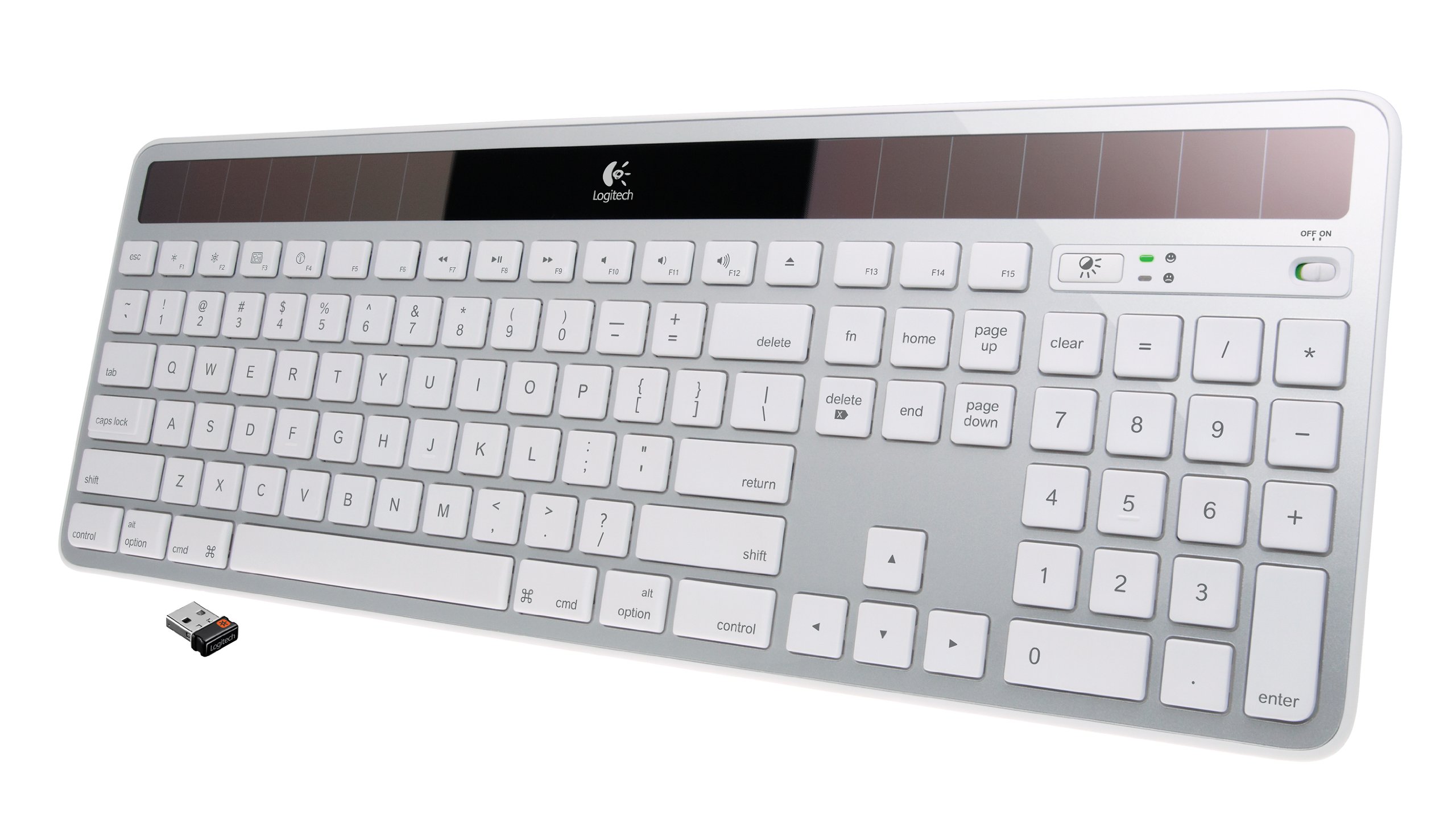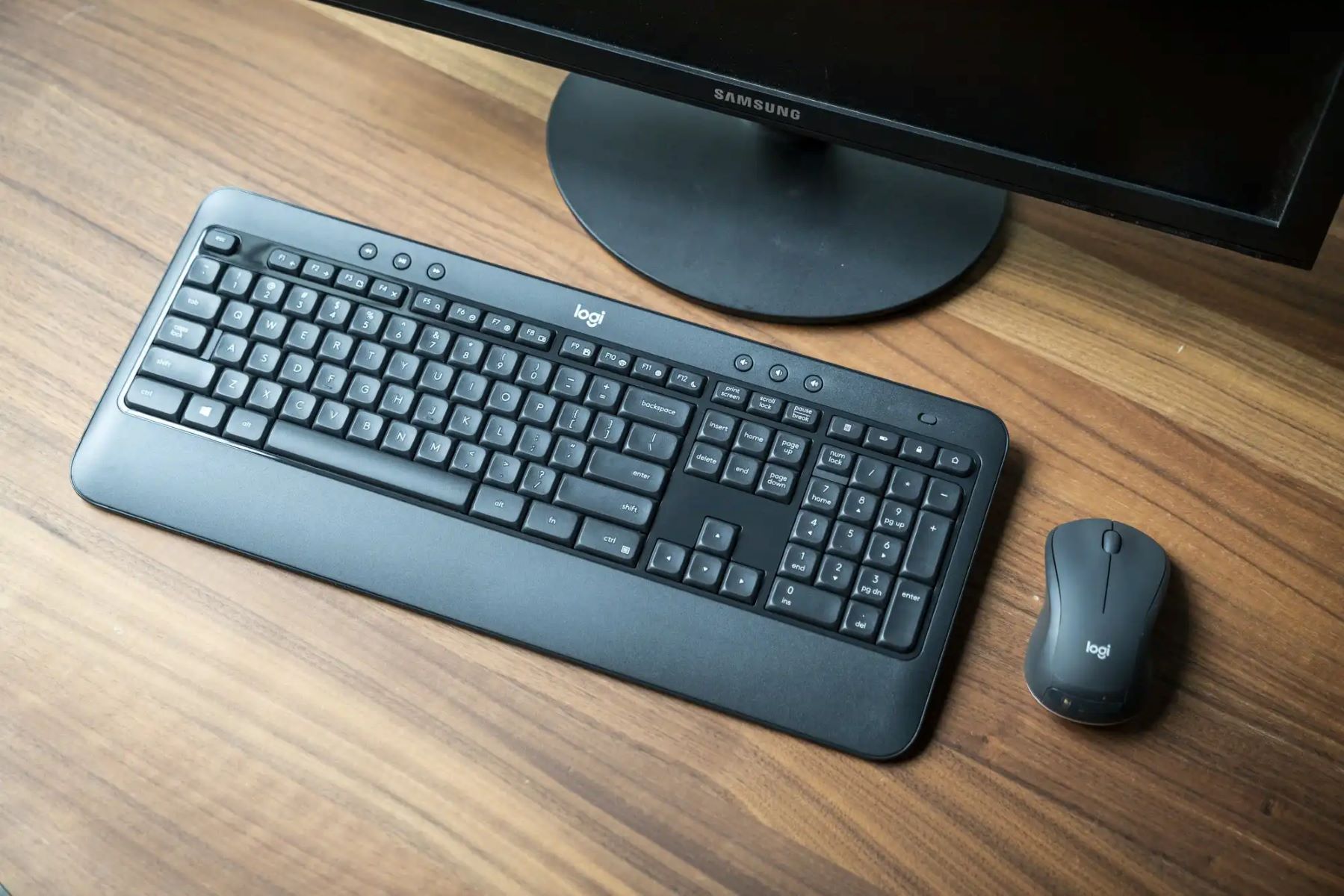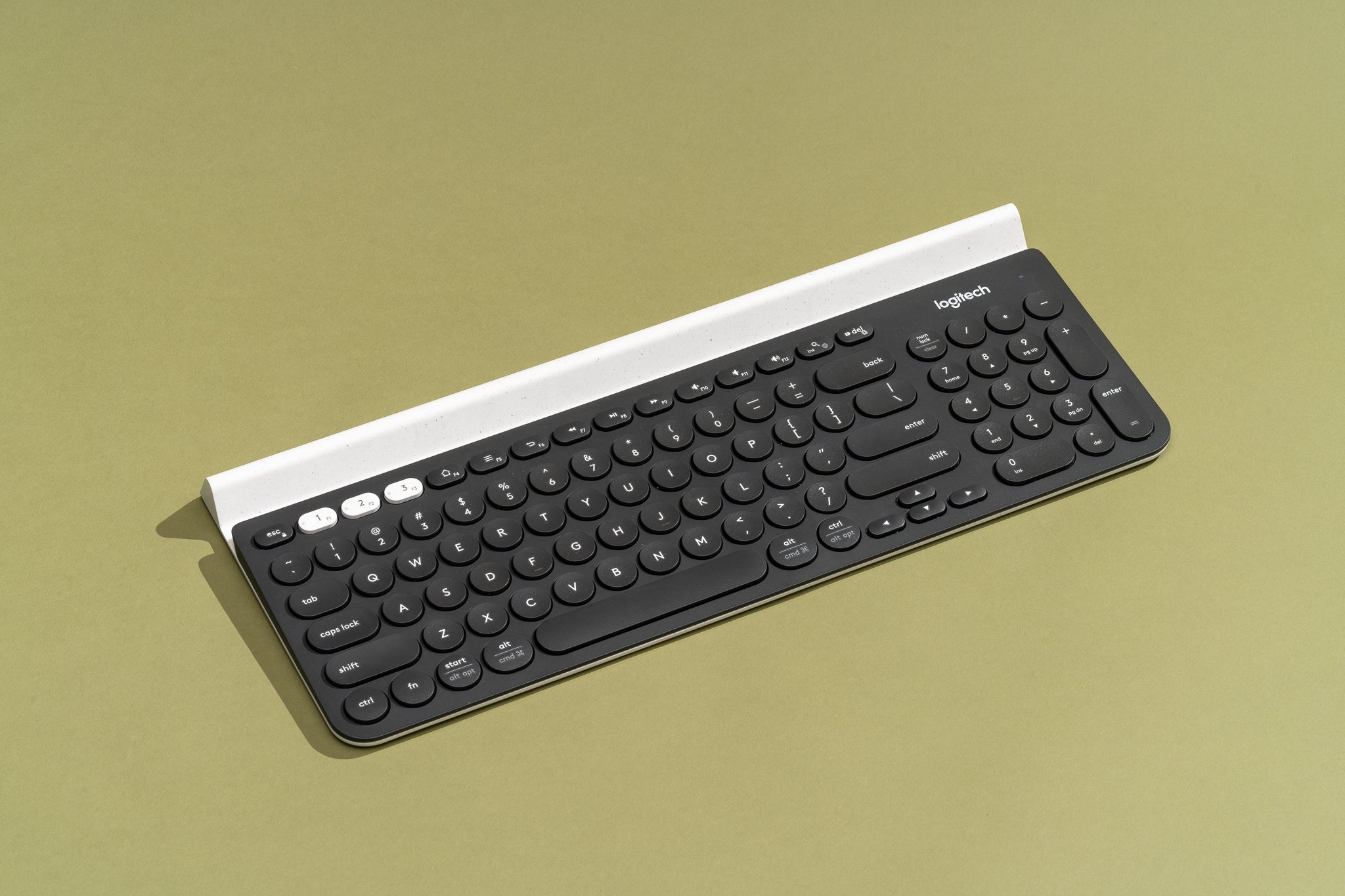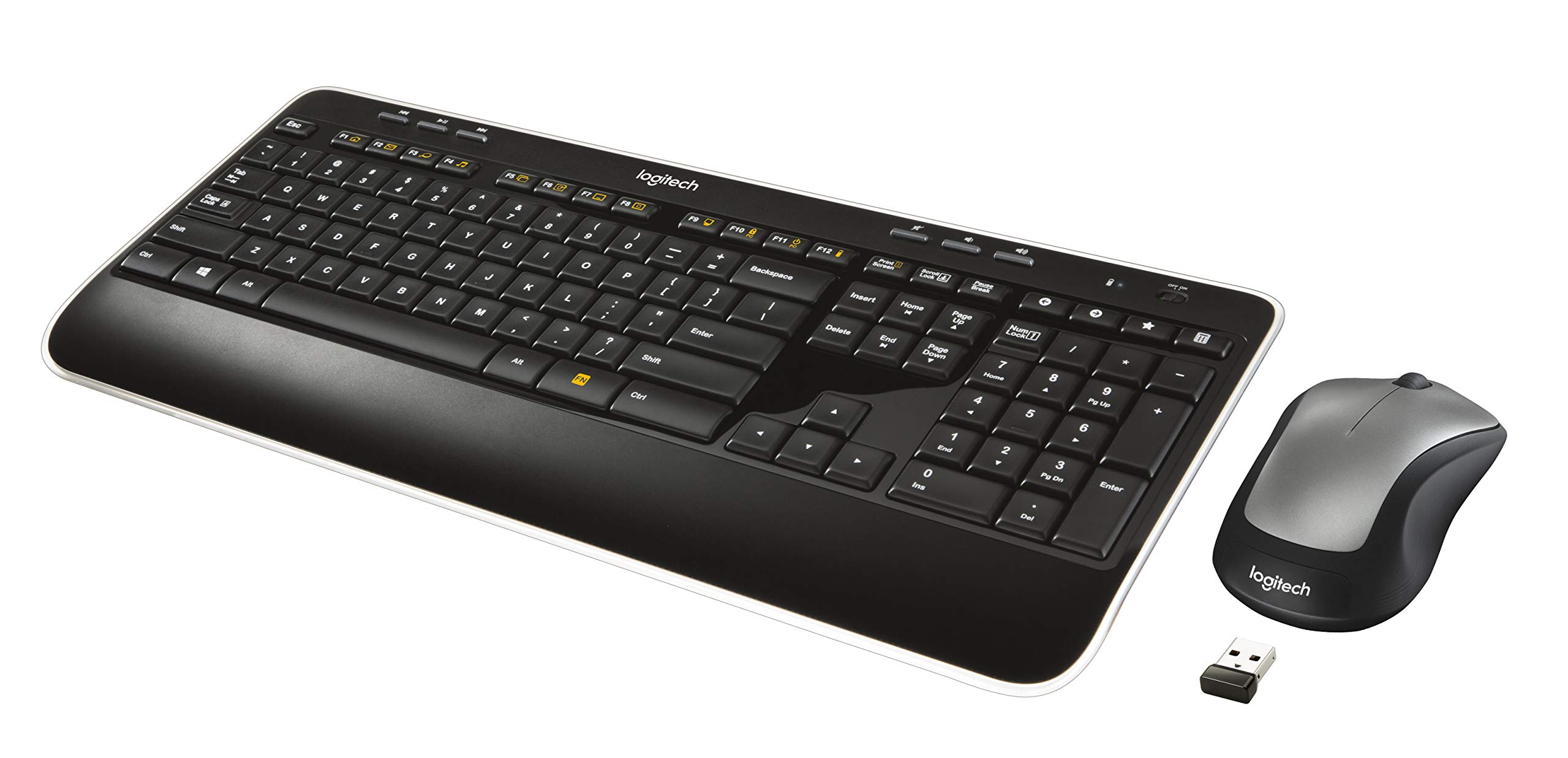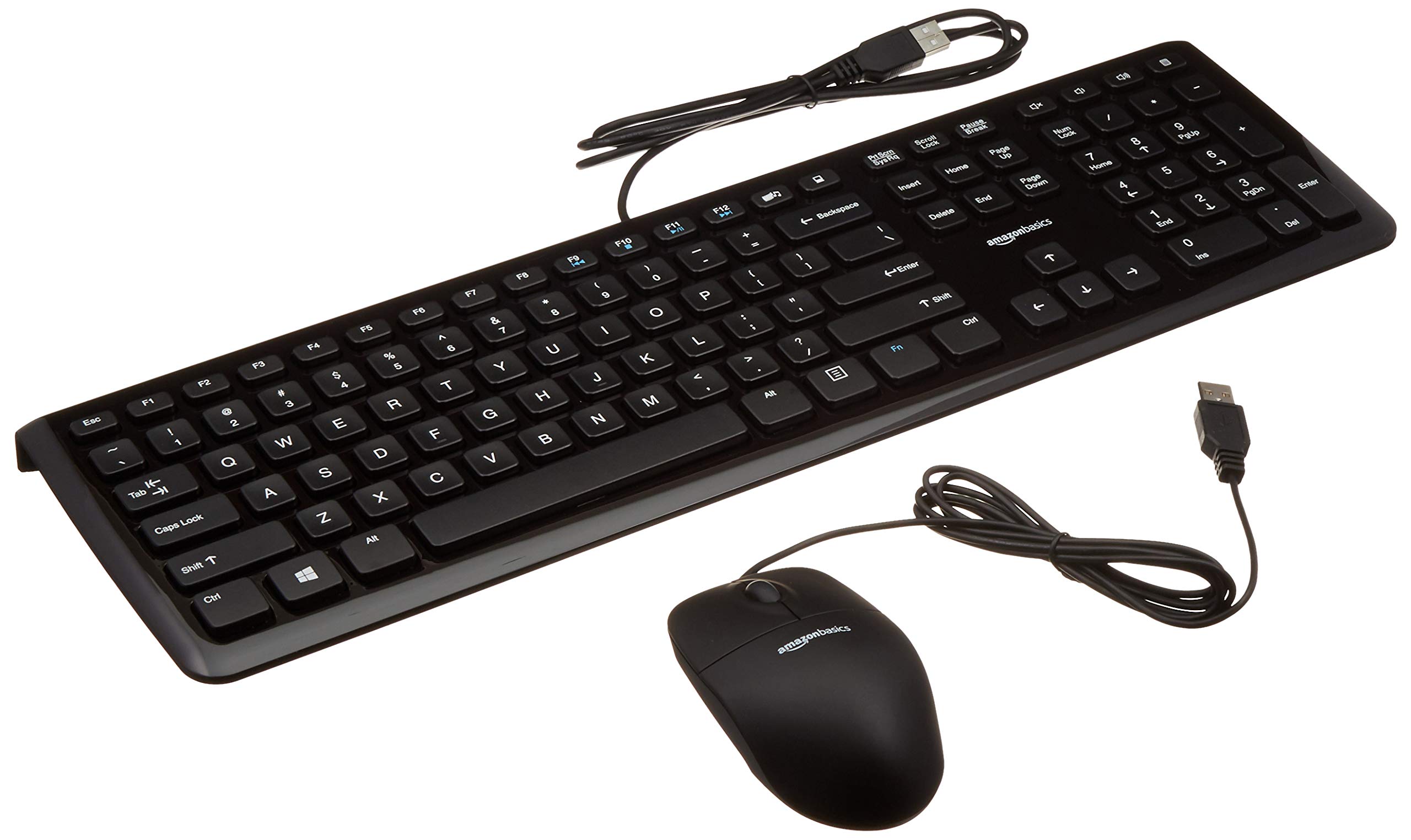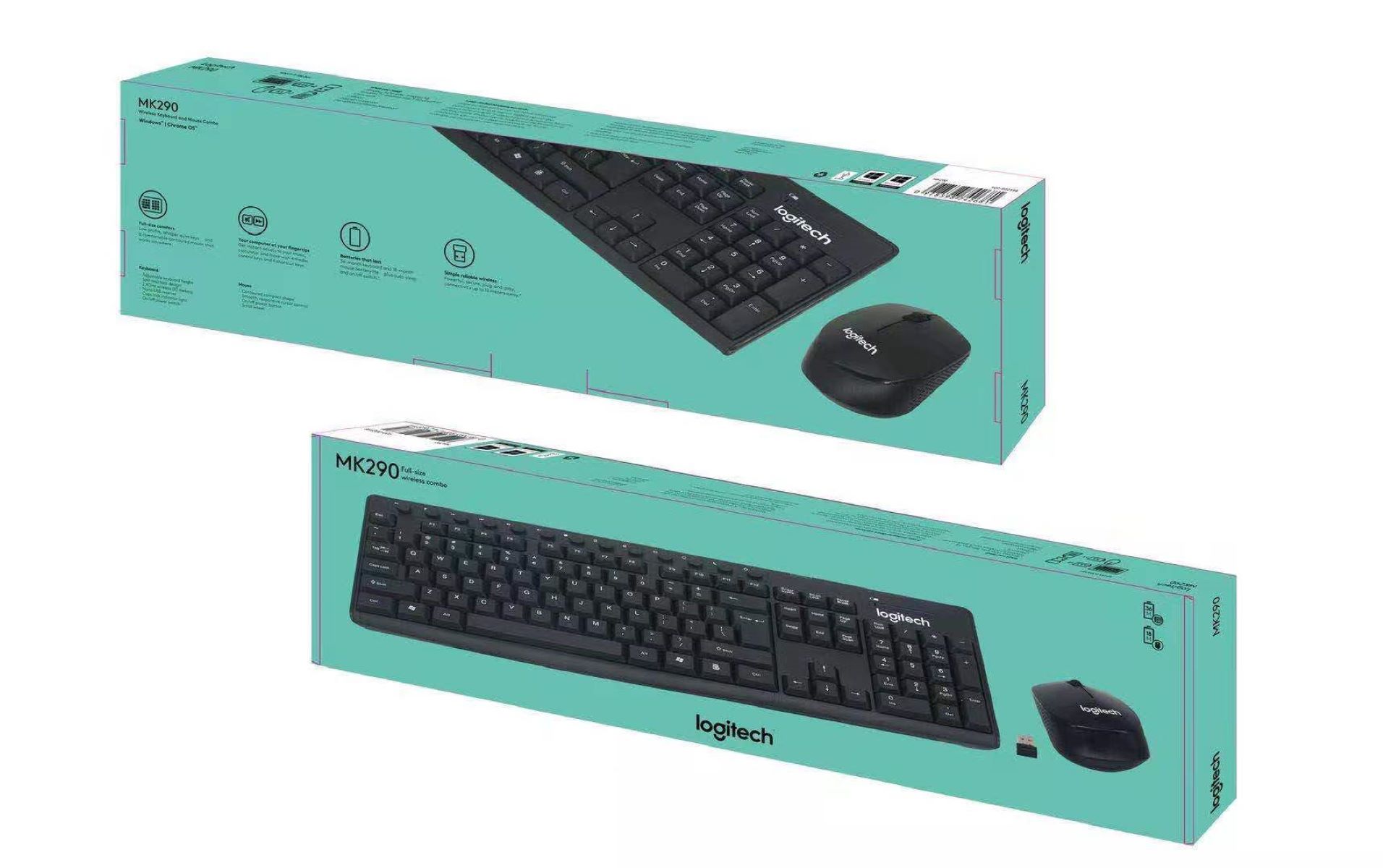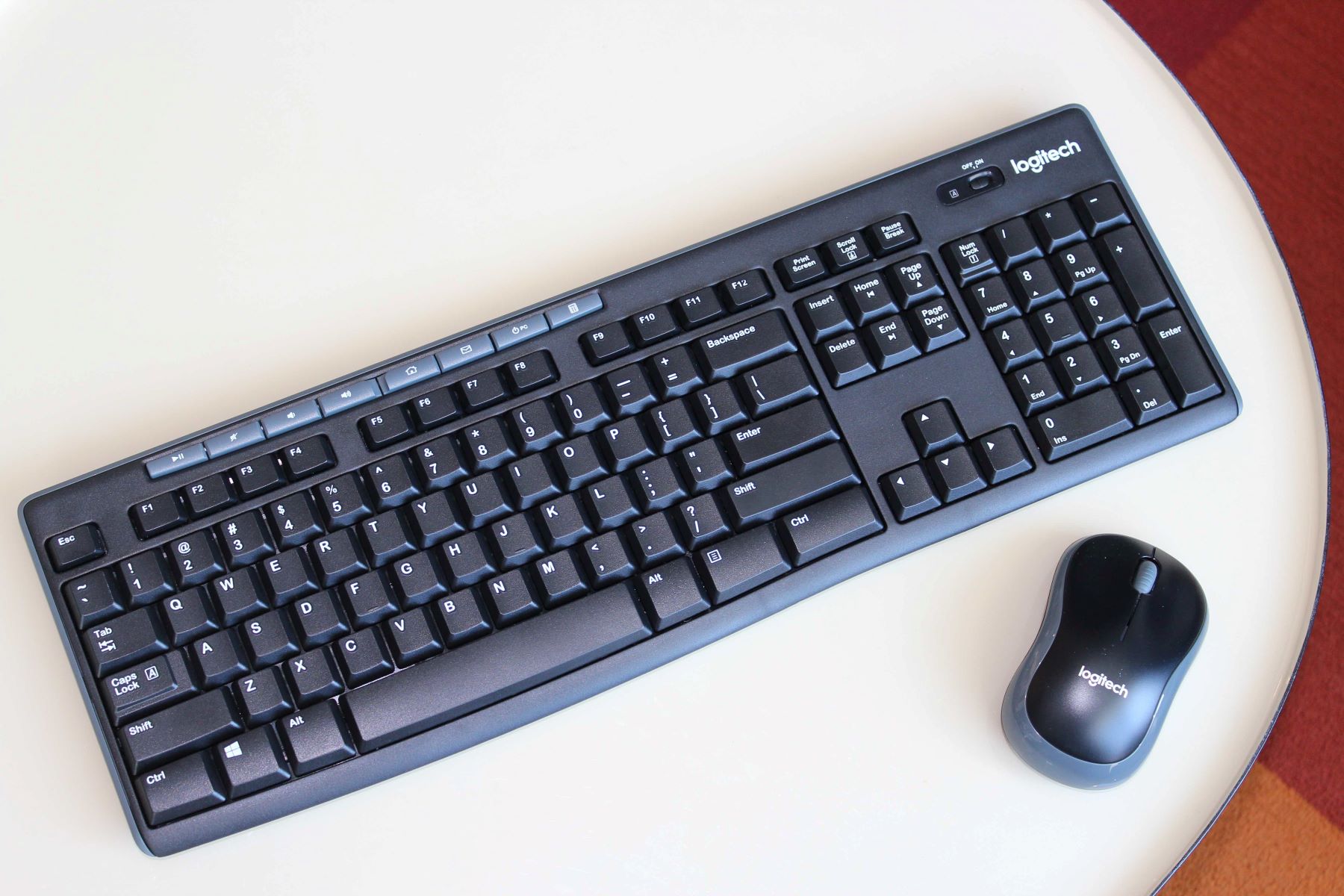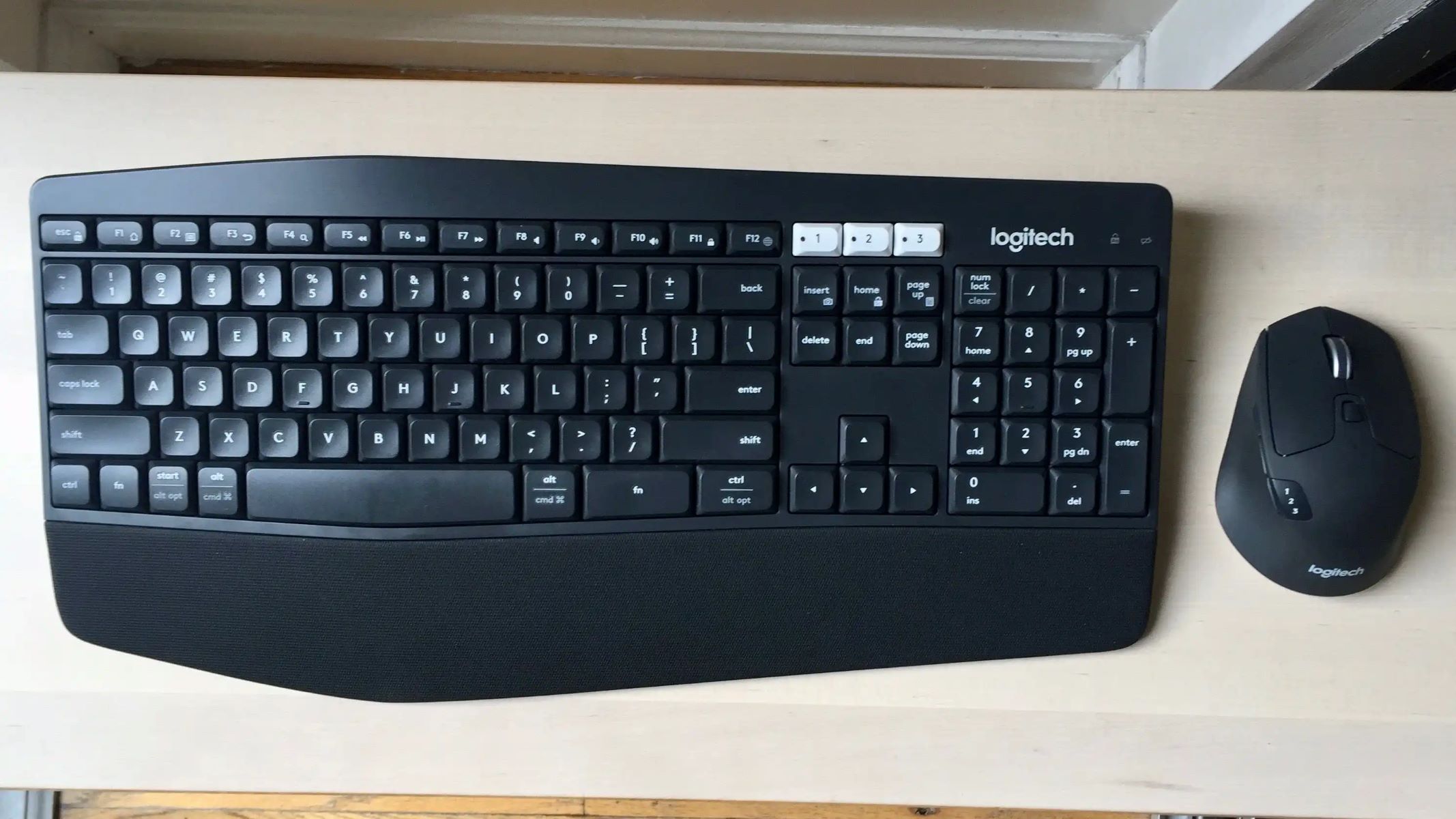Introduction
Wireless keyboards have revolutionized the way we interact with our computers, providing convenience, flexibility, and freedom from the limitations of traditional wired keyboards. These innovative peripherals use cutting-edge technology to establish a cordless connection between the keyboard and the computer, allowing users to type wirelessly from a distance. Whether you’re a professional, a student, or a casual user, understanding how wireless keyboards work can help you make the most of this modern input device.
In this article, we will explore the inner workings of wireless keyboards, the different components that make them function, and the advantages and potential challenges they present. We will also provide useful tips for choosing and using a wireless keyboard effectively.
Before diving into the details, let’s first understand the basic concept of how a wireless keyboard functions. Unlike their wired counterparts that require a physical connection to the computer, wireless keyboards utilize wireless communication protocols to transmit keystrokes to the computer. This wireless connection allows for increased mobility and eliminates the hassle of tangled cables.
By utilizing advanced technologies such as Bluetooth or RF (Radio Frequency), wireless keyboards are able to establish a seamless connection with the computer, ensuring reliable and responsive input. These keyboards can be paired with various devices like desktop computers, laptops, tablets, and even smart TVs, providing a versatile input solution for different setups.
Now that we have a basic understanding of wireless keyboards, let’s examine their components and how they enable the keyboard to function wirelessly.
How Does a Wireless Keyboard Work?
Wireless keyboards operate by utilizing either Bluetooth or RF technology to establish a connection with the computer. Let’s delve into each of these technologies:
- Bluetooth: Bluetooth-enabled keyboards use short-range radio waves to establish a wireless connection with the computer. The keyboard and the computer must both have Bluetooth capabilities and be within close proximity for successful pairing. This technology ensures a secure and stable connection, allowing for fast and responsive typing.
- RF (Radio Frequency): RF wireless keyboards employ radio signals to transmit data from the keyboard to the computer. A small USB dongle or receiver is connected to the computer, which receives the signals from the keyboard. This enables communication between the keyboard and the computer, even at a greater distance. RF technology offers excellent compatibility and a reliable connection, making it a popular choice for wireless keyboards.
Once the wireless connection is established, the keyboard sends a signal to the computer every time a key is pressed. This signal is received by the computer’s Bluetooth receiver or the USB dongle. The computer then recognizes the corresponding keystroke and processes it as if it was typed on a wired keyboard.
To ensure the security of the wireless connection, many wireless keyboards implement encryption protocols. These protocols encrypt the data transmission, making it difficult for unauthorized users to intercept and decipher the keystrokes.
Furthermore, wireless keyboards often incorporate power-saving features to conserve battery life. After a period of inactivity, the keyboard may enter a sleep mode to reduce power consumption. By pressing any key, the keyboard wakes up and re-establishes the connection with the computer swiftly.
With the basic understanding of how wireless keyboards work, let’s explore the components that make up these innovative peripherals in the next section.
Components of a Wireless Keyboard
A wireless keyboard consists of various components that work together to provide a seamless typing experience. Let’s take a closer look at each of these components:
- Key Switches: The key switches are the heart of any keyboard, including wireless keyboards. They are responsible for registering key presses and transmitting the signal to the computer. Different keyboards may use different types of key switches, such as mechanical or membrane switches, each offering a unique typing feel and response.
- Wireless Transmitter: The wireless transmitter is the device that sends the signals from the keyboard to the computer. In Bluetooth-enabled keyboards, the transmitter is built directly into the keyboard. In RF wireless keyboards, a small USB dongle or receiver acts as the transmitter, receiving the signals from the keyboard and relaying them to the computer.
- Battery: Since wireless keyboards are not connected to a power source, they rely on batteries to operate. The battery is typically located inside the keyboard and can be rechargeable or non-rechargeable. Rechargeable batteries eliminate the need for frequent battery replacements and are more environmentally friendly.
- Connectivity Buttons: Wireless keyboards usually have buttons or switches to facilitate the pairing process. These buttons enable the keyboard and computer to establish a secure connection. By pressing these buttons simultaneously on both the keyboard and the computer, they initiate the pairing process.
- Function Keys: Function keys are additional keys found on most keyboards that perform specific functions when pressed in combination with the Fn key. These keys can control volume, brightness, media playback, and other features, enhancing the usability of the wireless keyboard.
In addition to these main components, wireless keyboards may also include other features such as backlit keys for enhanced visibility in low-light conditions, multimedia keys for quick access to media controls, and ergonomic designs for improved comfort during typing sessions.
Understanding the components of a wireless keyboard can help you make an informed decision when choosing a keyboard that suits your specific needs and preferences. Next, let’s explore the differences between Bluetooth and RF wireless keyboards.
Bluetooth vs. RF Wireless Keyboards
When it comes to wireless keyboards, two common technologies are Bluetooth and RF. Let’s compare the key differences between these two types of wireless keyboards:
- Connection Range: Bluetooth keyboards generally have a shorter range compared to RF keyboards. Bluetooth typically has a range of up to 30 feet, while RF can reach up to 100 feet or more, depending on the specific model. If you require extended range and plan to use the keyboard from a distance, an RF keyboard may be a better choice.
- Compatibility: Bluetooth keyboards are widely compatible with various devices, including computers, smartphones, and tablets. They can seamlessly connect to any device that supports Bluetooth connectivity. On the other hand, RF keyboards require a USB dongle or receiver to establish a connection, making them compatible with devices that have an available USB port.
- Power Consumption: Bluetooth keyboards are generally more power-efficient compared to RF keyboards. Bluetooth technology is designed to conserve battery life, allowing the keyboard to operate for an extended period on a single set of batteries. In contrast, RF keyboards may consume slightly more power, but the difference in battery life may be negligible for most users.
- Setup and Pairing: Bluetooth keyboards are known for their straightforward pairing process. Once the Bluetooth function is enabled on the computer or device, the keyboard can be easily paired without the need for additional accessories. RF keyboards, on the other hand, require the USB dongle or receiver to be inserted into the computer’s USB port for proper functionality.
- Interference: Bluetooth keyboards can sometimes experience interference when multiple Bluetooth devices are in close proximity. This can lead to occasional lag or inconsistencies in keystroke transmission. RF keyboards, on the other hand, are more resistant to interference and provide a more reliable connection.
Ultimately, the choice between a Bluetooth or RF wireless keyboard depends on your specific requirements and preferences. If you value convenience, portability, and compatibility with a variety of devices, a Bluetooth keyboard may be the ideal choice. On the other hand, if you prioritize a longer range, a more robust connection, and compatibility with devices that have USB ports, an RF keyboard might be a better fit for you.
Now that we have explored the differences between Bluetooth and RF wireless keyboards, let’s move on to the process of pairing a wireless keyboard.
Pairing a Wireless Keyboard
Pairing a wireless keyboard with your computer or device is a simple process that allows the two devices to establish a secure and functional connection. The exact steps may vary depending on the type of wireless keyboard and the device you are using, but here are the general guidelines:
- Bluetooth Pairing:
- Ensure that Bluetooth is enabled on your computer or device.
- Turn on the Bluetooth keyboard and put it in pairing mode. This is usually done by pressing a specific key or combination of keys on the keyboard.
- On your computer or device, search for Bluetooth devices. The keyboard should appear in the list of available devices.
- Select the keyboard from the list and follow any on-screen prompts to complete the pairing process.
- RF Pairing:
- Insert the USB dongle or receiver into an available USB port on your computer.
- Turn on the wireless keyboard and ensure that it is within proximity of the USB dongle.
- The keyboard and dongle should automatically recognize and pair with each other. If not, refer to the manufacturer’s instructions for manual pairing.
Once the pairing is successful, the wireless keyboard should be ready to use. If prompted, enter any required passcodes or PINs to ensure a secure connection. It’s worth noting that some wireless keyboards may allow you to pair with multiple devices, allowing you to switch between them effortlessly.
If you encounter any issues during the pairing process, refer to the user manual or the manufacturer’s support resources for troubleshooting steps specific to your keyboard model.
Now that you are familiar with the process of pairing a wireless keyboard, let’s explore the power source and battery life of these innovative peripherals.
Power Source and Battery Life
Wireless keyboards rely on batteries as their power source since they do not have a direct connection to a power outlet. Let’s take a closer look at the power options and battery life considerations for wireless keyboards:
Battery Types:
Wireless keyboards commonly use either disposable (non-rechargeable) or rechargeable batteries:
- Disposable Batteries: These are traditional batteries that need to be replaced once they are depleted. They are widely available and offer the convenience of easy replacement. However, continued use of disposable batteries can be costly and less environmentally friendly.
- Rechargeable Batteries: Many wireless keyboards come with built-in rechargeable batteries. These batteries can be recharged using a USB cable or a dedicated charging dock. Rechargeable keyboards are more sustainable in the long run, as they eliminate the need for frequent battery replacements.
Battery Life:
The battery life of a wireless keyboard varies depending on factors such as usage, battery type, and the keyboard’s power-saving features. In general, Bluetooth keyboards tend to have longer battery life compared to RF keyboards, thanks to the power-efficient nature of Bluetooth technology.
On average, wireless keyboards with disposable batteries can last several months to a year, depending on usage. Rechargeable keyboards typically offer shorter battery life, ranging from a few days to a few weeks, but the batteries can be conveniently recharged when needed.
To prolong battery life, wireless keyboards often incorporate power-saving features. These include automatic sleep modes that activate after a certain period of inactivity. These power-saving modes help conserve battery power when the keyboard is not in use, extending the battery life.
If you want to maximize the battery life of your wireless keyboard, you can also manually turn it off when not in use. Additionally, adjusting the keyboard’s backlight settings or reducing the brightness can help conserve battery power.
It’s important to note that battery life can vary between different keyboard models and brands, so it’s always a good idea to check the specifications and read user reviews to get an idea of the battery performance before making a purchase.
Now that we have discussed the power source and battery life considerations, let’s explore the benefits of using a wireless keyboard.
Benefits of Using a Wireless Keyboard
Wireless keyboards offer a range of advantages that make them a popular choice for computer users. Here are some of the key benefits of using a wireless keyboard:
- Flexibility and Convenience: With no cords or wires to worry about, wireless keyboards provide enhanced flexibility and convenience. You can position the keyboard wherever you feel comfortable, without being restricted by the length of a cable. This allows for a more ergonomic typing experience, reducing the risk of strain and discomfort.
- Improved Mobility: Wireless keyboards enable improved mobility, allowing you to control your computer from a distance. This can be particularly useful when giving presentations, watching videos, or when using a computer connected to a large screen or TV.
- Easy Setup and Portability: Wireless keyboards are generally easy to set up. They often come pre-paired with the necessary receiver or have simple Bluetooth pairing processes. This makes them ideal for users who frequently switch between devices or need to use the keyboard on the go. Wireless keyboards are lightweight and compact, making them easy to transport and use in various settings.
- Reduced Clutter: The absence of cords and cables eliminates desktop clutter, providing a clean and organized workspace. This not only enhances the aesthetics of your setup but also facilitates easier cleaning and maintenance.
- Wide Compatibility: Wireless keyboards are compatible with various devices, making them versatile input solutions. They can be used with desktop computers, laptops, tablets, smartphones, and even smart TVs, providing seamless typing experiences across different platforms.
- Enhanced Productivity: Wireless keyboards often come with additional features and shortcut keys that can boost productivity. These may include multimedia keys, customizable function keys, and dedicated hotkeys for specific actions. These shortcuts can streamline workflow and allow for faster and more efficient navigation.
Whether you’re a professional, a student, or a casual user, a wireless keyboard can greatly enhance your computing experience, offering flexibility, convenience, and improved ergonomics. Its portable design and wide compatibility make it an excellent choice for those who value versatility and mobility.
However, it’s important to consider potential challenges and take certain factors into account when using wireless keyboards, which we will discuss in the next section.
Potential Challenges of Wireless Keyboards
While wireless keyboards offer numerous benefits, there are also potential challenges that users may encounter. Understanding these challenges can help you make informed decisions and mitigate any potential drawbacks. Here are some common challenges associated with wireless keyboards:
- Interference: Wireless keyboards, especially those that use RF technology, can be susceptible to interference from other electronic devices operating on the same frequency. This interference can result in intermittent connectivity issues or delayed keystrokes. To minimize interference, it’s recommended to keep the keyboard away from other devices that emit wireless signals, such as cordless phones or Wi-Fi routers.
- Battery Life: The reliance on batteries for power means that wireless keyboards need to be regularly monitored and batteries replaced or recharged when they are depleted. Depending on usage, this can be inconvenient and potentially disrupt workflow. It’s important to keep spare batteries on hand or ensure that rechargeable batteries are charged to avoid unexpected downtime.
- Signal Range: While wireless keyboards offer increased mobility, they do have limitations on the distance over which they can establish a reliable connection with the computer or device. If you need to operate the keyboard from a significant distance, it’s important to choose a keyboard with an appropriate signal range, or consider using a wired keyboard for more extended ranges.
- Compatibility Issues: Although wireless keyboards generally have wide compatibility, it’s essential to ensure that the keyboard you choose is compatible with your specific devices. Some keyboards may be designed for specific operating systems or have limited compatibility with certain devices.
- Lag or Connectivity Issues: Due to the wireless nature of these keyboards, there may be occasional instances of lag or connectivity interruptions. This can be frustrating, especially for users who require precise and responsive typing. Choosing a reputable brand and ensuring that the keyboard and computer are within the recommended range can help mitigate these issues.
- Security Concerns: Wireless communication carries a slight risk of unauthorized interception of data transmission. While the probability of such incidents is relatively low, it’s essential to choose wireless keyboards with advanced encryption protocols to ensure the security of your keystrokes and sensitive information.
Despite these challenges, many users find that the benefits of wireless keyboards outweigh the potential drawbacks. By carefully considering these challenges and taking the necessary precautions, you can make the most of your wireless keyboard and enjoy a seamless typing experience.
Now that we have explored the potential challenges, let’s move on to some tips for choosing and using a wireless keyboard effectively.
Tips for Choosing and Using a Wireless Keyboard
When selecting and utilizing a wireless keyboard, there are several factors to consider to ensure a seamless and enjoyable typing experience. Here are some tips to help you choose and use a wireless keyboard effectively:
- Evaluate Your Needs: Consider your specific requirements and preferences before selecting a wireless keyboard. Think about factors such as keyboard layout, size, key spacing, and any additional features you may need, such as multimedia keys or backlighting.
- Check Compatibility: Ensure that the wireless keyboard you choose is compatible with your operating system and the device(s) you plan to use it with. Check for any specific driver requirements or device limitations that may affect compatibility.
- Read Reviews: Before purchasing a wireless keyboard, read customer reviews to gain insight into the keyboard’s build quality, connectivity reliability, and battery life. Real user experiences can provide valuable information that helps you make an informed decision.
- Consider Ergonomics: If you spend long hours typing, consider a wireless keyboard with an ergonomic design that provides better wrist support and reduces strain. Look for keyboards with adjustable tilt angles and wrist rests for improved comfort during extended typing sessions.
- Proper Placement: Position the wireless receiver or dongle in a USB port that provides optimal connectivity. For RF keyboards, ensure that the dongle has a clear line of sight with the keyboard for the best signal transmission.
- Monitor Battery Life: Keep track of your wireless keyboard’s battery life and have a spare set of batteries or a charger readily available. Rechargeable keyboards should be charged regularly to avoid unexpected battery drain during use.
- Minimize Interference: Place the wireless keyboard away from other devices that may cause signal interference, such as cordless phones, Wi-Fi routers, or microwave ovens. These devices can disrupt the wireless connection and affect the keyboard’s performance.
- Maintain Cleanliness: Regularly clean your wireless keyboard to keep it free from dust, dirt, and debris. Use a soft, lint-free cloth and a mild cleaning solution to gently wipe the keys and surfaces. Avoid using abrasive cleaners or submerging the keyboard in water.
- Secure Your Connection: If security is a concern, opt for a wireless keyboard with advanced encryption protocols. These encryption techniques ensure that your keystrokes remain protected from unauthorized interception.
- Keep Firmware Updated: Check for firmware updates from the manufacturer periodically. These updates may bring performance improvements, bug fixes, or enhanced compatibility, allowing you to maximize the functionality of your wireless keyboard.
By following these tips, you can choose a wireless keyboard that suits your needs and make the most out of its features. Whether for work, gaming, or casual use, a well-chosen wireless keyboard can greatly enhance your productivity and typing experience.
As a final reminder, always refer to the manufacturer’s instructions and guidelines to ensure proper setup, maintenance, and troubleshooting for your specific wireless keyboard model.
Conclusion
Wireless keyboards have become an integral part of our computing experience, offering convenience, flexibility, and improved ergonomics. Understanding how these keyboards work and the components that make them function allows us to make informed choices and maximize their benefits.
Bluetooth and RF wireless keyboards provide cordless connectivity with different ranges and compatibility options. Bluetooth keyboards offer seamless pairing with various devices, while RF keyboards offer extended range and robust connections. The choice between the two depends on individual preferences and specific needs.
Pairing a wireless keyboard is a straightforward process, and considering factors like battery life, power source, and key components ensure a smooth and enjoyable typing experience. Moreover, wireless keyboards bring various benefits, including enhanced mobility, reduced clutter, improved productivity, and easy portability.
While wireless keyboards offer great advantages, there are potential challenges to be aware of, such as connectivity issues, battery life considerations, and the possibility of interference. By taking precautions, reading reviews, and understanding these challenges, users can mitigate potential drawbacks and enjoy seamless wireless typing.
Choosing the right wireless keyboard involves evaluating personal needs, considering compatibility, and prioritizing ergonomics. Regular maintenance, minimizing interference, and keeping firmware updated contribute to the longevity and optimal performance of the wireless keyboard.
Overall, wireless keyboards have revolutionized the way we interact with our devices, offering freedom of movement, increased comfort, and flexible input options. With the right wireless keyboard and proper usage, you can enhance your productivity and enjoy a more enjoyable computing experience.







